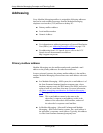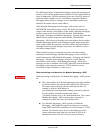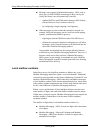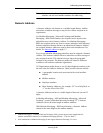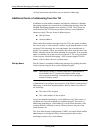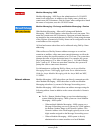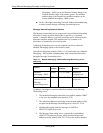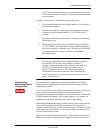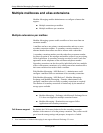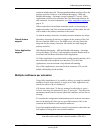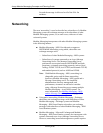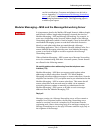
Addressing and networking
November 2004
Avaya Modular Messaging Concepts and
Planning Guide
6-9
(1234). The Message Networking server then sends the message
to the remote traditional system, via a protocol that the traditional
system supports.
To address a message to a Modular Messaging subscriber:
1. The networked subscriber uses mailbox number 1234 to log in to
the subscriber mailbox
2. The subscriber addresses a message to the Modular Messaging
recipient, using the network address (732-817-0000) of the
recipient
3. The remote traditional system sends the message to the Message
Networking server.
4. The Message Networking server converts the network address
(732-817-0000) to the e-mail address of the Modular Messaging
subscriber (name@sys.company.com). The Message Networking
server then sends the message via SMTP to the Modular
Messaging system.
Note: Modular Messaging subscribers can use the Message
Networking e-mail address when addressing from a graphical
user interface (GUI) client. For example, to address a
message to a networked subscriber whose network address is
408-555-1234, Modular Messaging subscribers can use
4085551234@mn.avaya.com. The Message Networking
e-mail addresses of remote users are in the LDAP directory,
so GUI client users can use this directory to resolve names to
these e-mail addresses.
Implementing
networking without
using prefixes
It is possible for an organization with multiple Modular Messaging—
MSS systems to implement networking between the systems, without
assigning any prefixes.
In such a case, the network address of the remote subscribers will be the
same as their local mailbox number. Such an implementation is
appropriate for an organization with more subscribers at one location than
a single Modular Messaging—MSS system supports. For example, an
organization with 40,000 subscribers, all using 5-digit dialing.
With multiple Modular Messaging—MSS systems, some features that are
voice mail domain-specific will not work between the systems. For
example, features like reply to Call Answer messages, call sender of Call
Answer messages, call sender of voicemail messages, and transfers will
not work between the systems.
When two networked Modular Messaging—MSS systems are located in
different cities, their respective prefixes might be a city-specific switch




